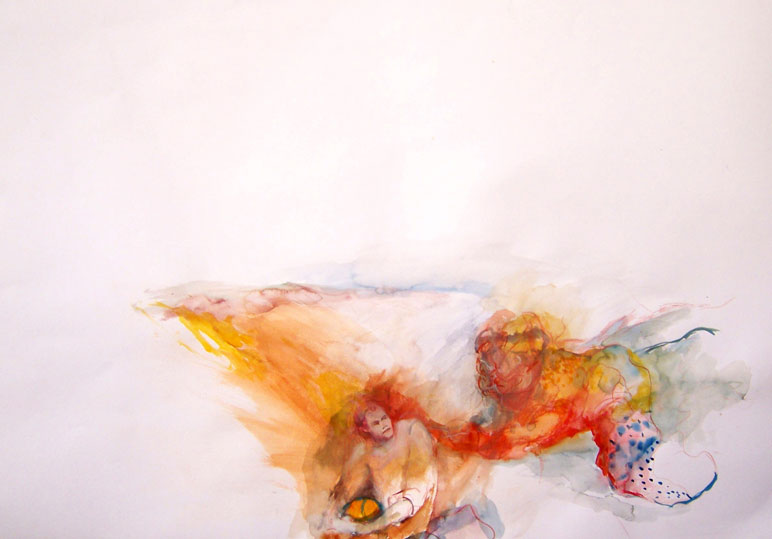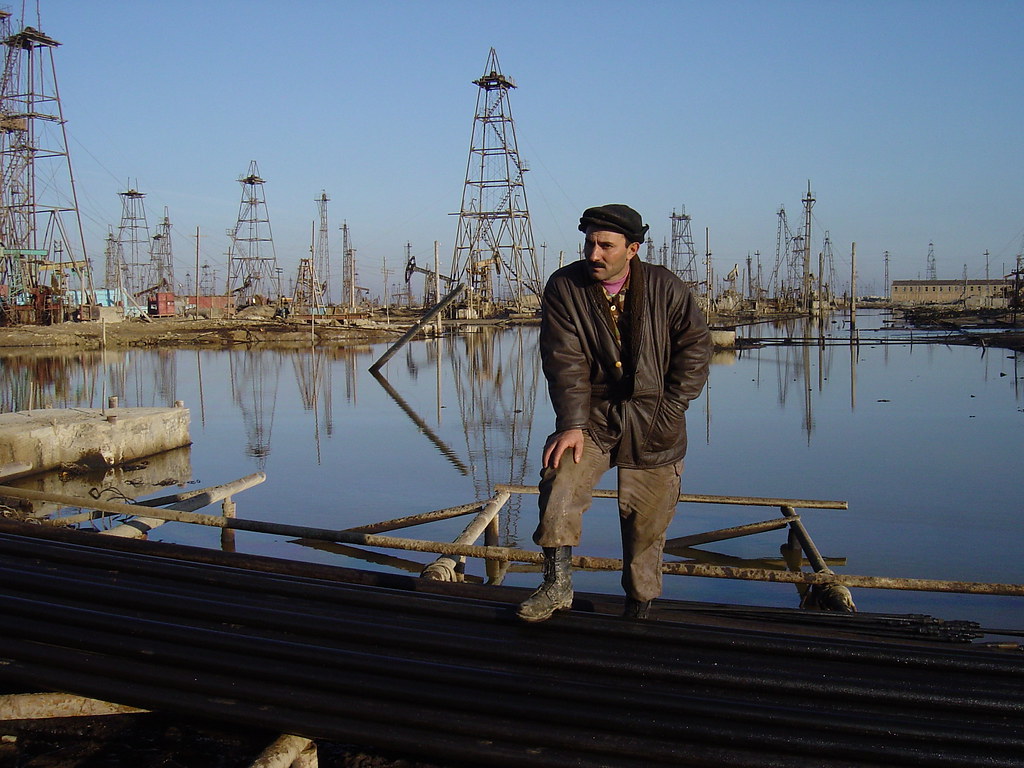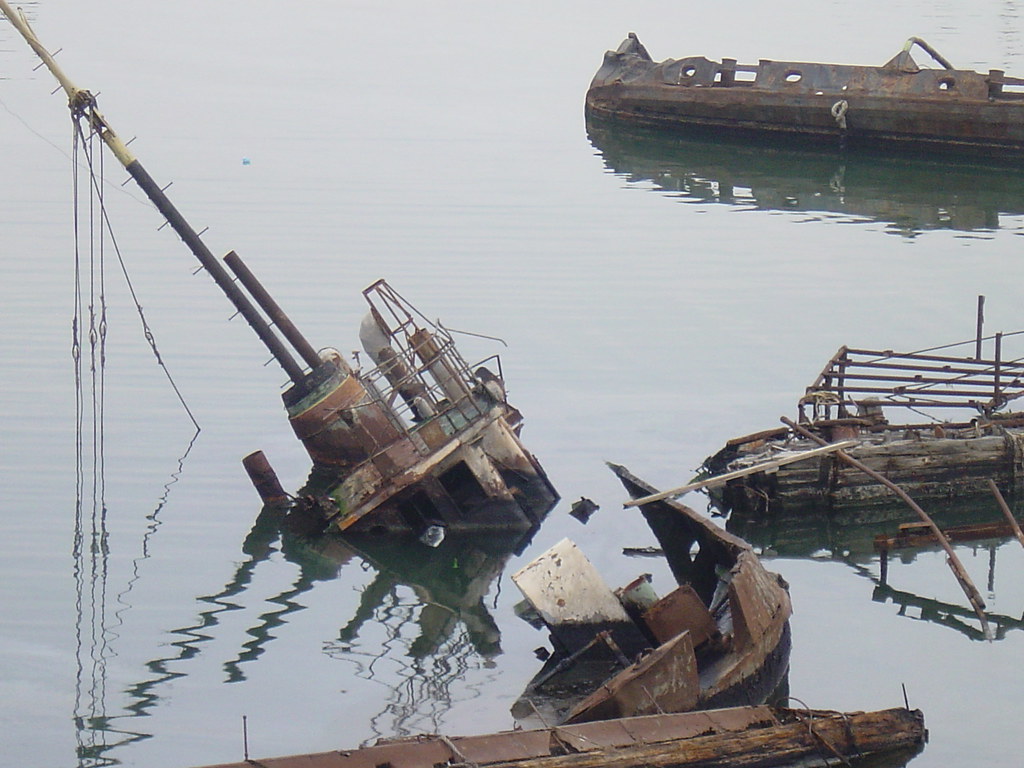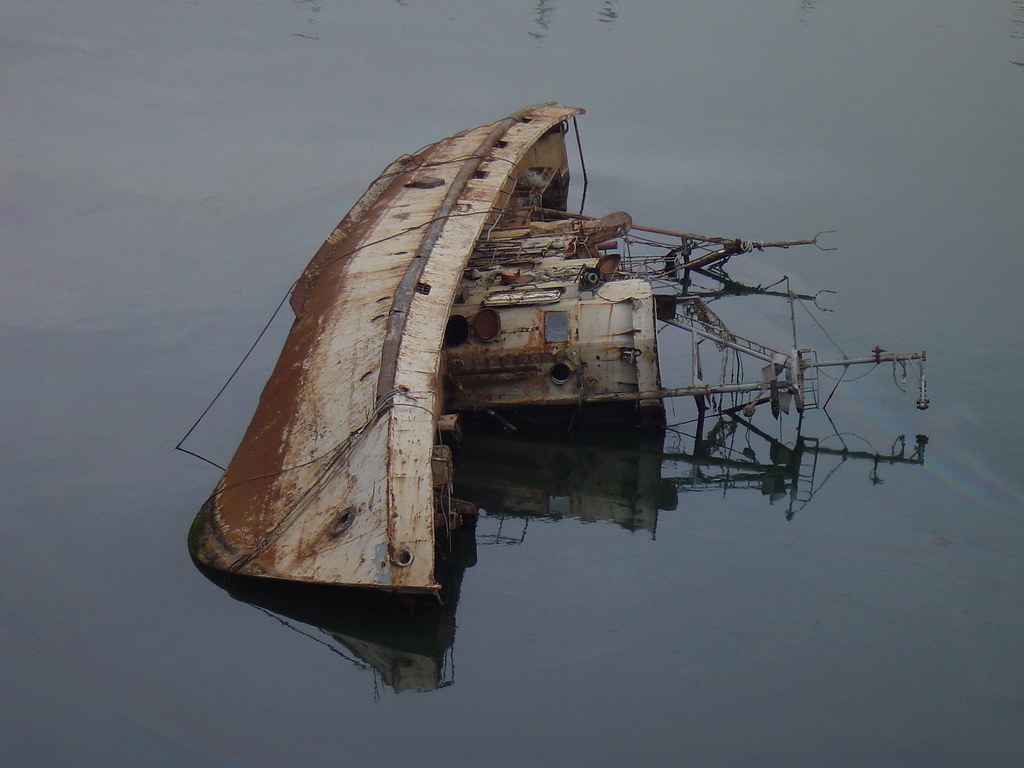 www.myspace.com/zulaltrio
www.myspace.com/zulaltrioSaturday, February 28, 2009
A-CAPELLA: Zulal. Armenian A Cappella Trio (myspace.com)
 www.myspace.com/zulaltrio
www.myspace.com/zulaltrioARTIKEL: Feuer und Phlegma (faz.net)
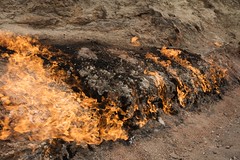
Öl, Öl, Öl. Ob als Lache, Dunst oder als Zeichen - es ist allgegenwärtig. Schon auf dem ersten Spaziergang entlang der Hafenpromenade von Baku weht beständig ein Hauch von Schiffsdiesel vom Meer heran, obwohl die Silhouetten der Tanker weit draußen im Sonnenglast verschwimmen. Auch die rot-weiß gestreiften Schlote der Raffinerien sind zu weit entfernt, um als Geruchsquelle in Betracht zu kommen, und der große Förderturm an der Mole ist bloß Kulisse, ein Aussichtspunkt. Sind es die Abgase der dunkel glänzenden Geländewagen? Oder die Ausdünstungen der schimmernden Polyesteranzüge, die hier mit Würde getragen werden? Nein, es ist das Wasser selbst, das den Ölgeruch absondert. Nicht weil der Umgang mit dem schwarzen Gold so lax wäre, sondern weil Ölverschmutzung hier immer schon Teil der Natur war. So dicht liegen die Schätze unter der Erdoberfläche, dass oft schon ein Spatenstich genügt, um sie zutage zu fördern. Aus dem "Brennenden Berg" Yanardag lodern sogar große Flammen. Das über der Ölblase sitzende Gas hat sich hier selbst entzündet. Fauchend hält das Feuer Wind und Regen stand - seit Jahrzehnten.
Friday, February 27, 2009
PERFORMANCE-ART: Cleaning Girl. By Natalia Mali
 Great Artist Natalia Mali (Album)
Great Artist Natalia Mali (Album)Natalia Mali wurde 1971 in Machatschkala in der Republik Dagestan, Russische Föderation, geboren. Sie studierte bis 1995 zunächst an der Staatlichen Universität Moskau, absolvierte zwischen 1996 und 1998 einen BA in Filmstudien und Fotografie an der Yale University, USA und schloss 2005 mit einem MA in Performance und Kultur am Drama Department der Universität London ab. Mit ihren künstlerischen Arbeiten war sie bei zahlreichen internationalen Einzel- und Gruppenausstellungen vertreten. Zuletzt nahm sie 2006 an der 2. Moskau-Biennale sowie der Sydney-Biennale teil. Einen Schwerpunkt ihres künstlerischen Schaffens bilden Performances und Videoarbeiten. Natalia Mali lebt und arbeitet in London.
n-mali.artinfo.ru
Quelle: http://www.ifa.de/ausstellungen/dt/programmrueckblick/2007/lust-auf-raum/natalia-mali/
mehr: www.galerieartdigital.com/mali.htm
NEWS: 20 Feb 09 and 27 Feb 09 | Caucasus Reporting Service 481 and 482 (iwpr.com)
Georgia: Refugees Claim to be Put at Risk
Officials urging displaced to go home, but they say their villages remain dangerous. By Magda Memanishvili in Knolevi and Tbilisi (CRS No. 482, 27-Feb-09)
Tensions on Eve of Yerevan Rally
Armenia braces for protests commemorating violent break-up of opposition demonstration. By Karine Asatrian in Yerevan (CRS No. 482, 27-Feb-09)
Azeri Journalist Speaks of Interrogation Ordeal
He claims what he thought was to be an interview with state officials turned into abusive encounter.By Samira Akhmedbeili in Baku (CRS No. 482, 27-Feb-09)
20 Feb 09 Caucasus Reporting Service 481
Armenians Fear Jobs in Russia Will Vanish
Concerns raised by signs of discrimination against foreign workers and collapse of the economy.By Vahe Avanesian in Moscow and Nelly Babaian in Yerevan (CRS No. 481, 20-Feb-09)
Gay Novel Shocks Azeris
Book about love affair between Azeri and Armenian sells well, despite uproar over its publication.By Nigar Musayeva in Baku (CRS No. 481, 20-Feb-09)
Georgia: Minority Faiths Face Bureaucratic Hurdles
Religious minorities say they struggle to have their legal rights to free worship recognised.By Fati Mamiashvili in Tbilisi (CRS No. 481, 20-Feb-09)
Wednesday, February 25, 2009
ARCHITECTURE: Wedding Palace (Tbilisi, Georgia, 1985) Photo: Frederic Chaubin (pingmag.jp)
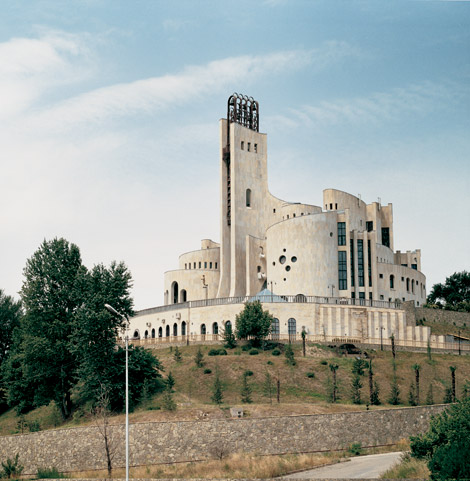
Frederic Chaubin: Soviet SF Style
Frederic Chaubin, who was born in Cambodia of a French father and Spanish mother, is chief editor of the French magazine Citizen K, and also a photographer who has been attracted by strange architecture in the former Soviet Union. The photos he takes in countries like Lithuania, Ukraine, Russia, Belarus and Georgia, reveal an extraordinary, almost sci-fi world. Today, PingMag takes you to the world of Soviet style architecture with Frederic Chaubin himself.
Written by Chiemi
full interview with great photos >>>
Frédéric Chaubinicon 048 June 2007
iconeye.com >>>
ARCHITEKTUR: Die Ferienstadt "Artek" am Schwarzen Meer, "Aktau", eine Planstadt am Kaspischen Meer und Tbilisi in der Bauwelt (bauwelt.de)
THEMA: Artek: Ferienstadt am Schwarzen Meer. Aktau: Planstadt am Kaspischen Meer. Bertelsmann Berlin 2000 Standardeinband ca. 48 S. Guter Zustand,
INHALT:
A. Winkelmann: Seit 1925 kommen die Jungen Pioniere zur Erholung nach Artek auf die Krimhalbinsel. Ein Ferienlager für 4000 Kinder.
M. Fröhlich: Ein Rundgang durch Artek (Anatoli T. Poljanski).
M.A. Amann: Funktionalistische Entwurfsideen von Iwan Leonidow. Bezüge zum Maison Dom-ino von Le Corbusier.
Schewtschenko: Aktau: Eine ideale Stadtgründung aus der Zeit der Sowjetunion.
bestellen >>>
Bauwelt 36/2000. Stadtbauwelt 147.
THEMA: Warum ausgerechnet Tiflis? Bertelsmann Berlin 2000 Standardeinband ca. 96 S. Guter Zustand
INHALT:
F. Zwoch: Fotoessay: Ortszeit Tiflis. Eine Reise in eine andere Zeit.
W. Lejawa: Wovon lebt ein Architekt in Tiflis?
D. Dartschiaschwili: Ein uralter Ehrenkodex als Grundlage der Stadtökonomie: Das Tifliser Abkommen.
N. Zinzabadse: Rettet das Alte Tbilissi.
W. Kotetischwili: Der Dichter verwebt Familienchronik und Stadtgeschichte.
G. Gwacharia: Tiflis im Film.
N. Getia: Das Hotel Iwerai und die Philharmonie.
A. Kordsaia-Samadaschwili: Meine Wohnorte in Tiflis.
L. Bakradse: Tifliser Kulturen: Heidnische Gebräuche, christliche Sitten, Duduki und Internet.
bestellen >>>
BOOK: * Illusion of Power: Russia after the South Caucasus Battle (shop.ceps.eu)
Download PDF for free
-
Authors
Stanislav Secrieru
-
Research Area
EU-Russian relations; Caucasus and the Black Sea
-
Series
CEPS Working Documents
-
Notes
The war in the South Caucasus sent shockwaves throughout the post-Soviet world, European capitals and across the Atlantic, making more urgent the demand for a re-evaluation of policies towards Russia. The projection of hard power in Georgia generated a number of unintended consequences for the Russian state. The crisis and war unveiled many of Russia’s weaknesses and vulnerabilities across four crucial dimensions: the military, the ‘power vertical’ and federalism, the economy and Russia’s international position. This paper aims at reassessing Russia’s military, political, economic and diplomatic might after the battle in the South Caucasus. The research concludes with proposals for a new Western strategy on Russia and the EU’s Eastern Neighbourhood which would ensure an undivided and sustainable European order.
-
Date Published
24 February 2009
source >>>
LECTURE: The Mountains Move: Russia, Caucasia, and the West (events.berkeley.edu)
Lecture | February 19 | 2-3 p.m. | 223 Moses Hall
Ronald Suny, Charles Tilly Collegiate Professor of Social and Political History; Political Science, University of Michigan
Slavic, East European, and Eurasian Studies, Institute of (ISEEES), International Studies, Institute of
Last August Russia and Georgia went to war in a part of the world that few in the Unied States were aware of. Yet the obscure conflict in South Ossetia had global consequences. Ron Suny, a long timer historian of the Caucasus, argues that the struggle in the region was part of a larger rivalry for global influence by Russia and the United States. For historians context is all; for undestanding the future of East-West relations, the past has to be understood.
Ronald Suny is Professor Emeritus of Political Science at the University of Chicago. A graduate of Swarthmore College and Columbia University, he taught at Oberlin College (1968-1981), as visiting professor of history at the University of California, Irvine (1987), and Stanford University (1995-1996). He was the first holder of the Alex Manoogian Chair in Modern Armenian History at the University of Michigan (1981-1995), where he founded and directed the Armenian Studies Program. He is the author of numerous books on the Caucasus.
SIENCE: First DNA sequences from Asian cave bear fossils reveal deep divergences and complex phylogeographic patterns.
Max Planck Institute for Evolutionary Anthropology, Deutscher Platz 6, D-04103 Leipzig, Germany.
Abstract Until recently, cave bears were believed to have only inhabited Europe. However, recent morphological evidence suggests that cave bears' geographic range extended as far east as Transbaikalia, Eastern Siberia. These Asian cave bears were morphologically distinct from European cave bears. However, how they related to European lineages remains unclear, stressing the need to assess the phylogenetic and phylogeographic relationship between Asian cave bears and their European relatives. In this work, we address this issue using a 227 base-pair fragment of the mitochondrial control region obtained from nine fossil bone samples from eight sites from the Urals, Caucasus, Altai Mountains, Ukraine and Yana River region in Eastern Siberia. Results of the phylogenetic analyses indicate that (i) the cave bear from the Yana River is most closely related to cave bears from the Caucasus region; (ii) the Caucasus/Yana group of bears is genetically very distinct from both European cave bears and brown bears, suggesting that these bears could represent an independent species; and (iii) the Western European cave bear lineage reached at least temporarily to the Altai Mountains, 7000 km east of their known centre of distribution. These results suggest that the diversity of cave bears was greater than previously believed, and that they could survive in a much wider range of ecological conditions than previously assumed. They also agree with recent studies on other extinct and extant species, such as wolves, hyenas and steppe bison, which have also revealed higher genetic and ecological diversity in Pleistocene populations than previously known.
full document >>>
REPORT: The Changing Landscape of Islam in North Ossetia (jamestown.org)
full text >>>
STUDY: Black Sea: Pentagon’s Gateway to Three Continents and the Middle East by Rick Rozoff (dandelionsalad.wordpress.com)
http://groups.yahoo.com/group/stopnato/message/37422
February 22, 2009
The Black Sea region connects Europe with Asia and the Eurasian land mass to the Middle East through Turkey on its southern rim, which borders Syria, Iraq and Iran.
The northern Balkans lie on its western shores and the Caucasus on its eastern end, the latter a land bridge to the Caspian Sea and Central Asia.
Ukraine, Russia and the strategic Sea of Azov are on its northern perimeter.
Given its central location the Black Sea has been coveted for millennia by major powers: The Persian and Roman empires, Greeks and Hittites, Byzantines and Huns, Ottoman Turkey and Czarist Russia, even by Napoleon’s France and Hitler’s Germany in their wars to unite Europe to Asia and the Middle East.
The famed Trojan War was fought for control of Troy/Dardania/Ilium, the entrance to the Sea of Marmara which connects the Mediterranean to the Black Sea. The strait connecting the two is still called the Dardanelles after ancient Dardania.
Going back to antiquity a third continent has also been involved, Africa; the Greek historian Herodotus claimed that the Black Sea city of Colchis, now in modern Georgia, was founded by Egyptians and in Virgil’s if not Homer’s account of the siege of Troy Memnon, king of Abyssinia (Ethiopia), is slain by Achilles fighting in defense of Troy.
A Romanian news source recently reiterated the importance of the region for the modern era:
“Through the Black Sea, the European area strategically meets Central Asia, the Caucasus and the Middle East, hydrocarbon production and transit areas.”
(Nine O’Clock News, May 14, 2008)
Allusions to the Black Sea’s importance for not only energy and transit but for world military purposes will occur frequently in citations to follow.
Prior to the breakup of the Warsaw Pact in 1989 and the Soviet Union two years later the Black Sea was mainly off limits to the West in general and to the Pentagon and NATO in particular. Until 1991 only four states bordered the sea, Bulgaria, Romania, Turkey and the Soviet Union.
Turkey as a key NATO member state was the West’s sole beachhead in the region with Bulgaria and Romania, the second more nominally than in fact, members of the Eastern bloc and the Warsaw Pact.
In the intervening eighteen years the situation in this region, like so many others, has been transformed and a new battle for control of it has emerged.
There have arisen two new littoral states, Georgia and Ukraine, with Abkhazia added last August, and every past Warsaw Pact nation outside the former Soviet Union is currently a full member of both NATO and the European Union - Bulgaria, the Czech Republic, the former German Democratic Republic, Hungary, Poland, Romania and Slovakia - with three former Soviet republics on the Baltic Sea - Estonia, Latvia and Lithuania - also dual members.
As an Indian commentator, Premen Addy, described it last summer:
“NATO’s noose is drawn ever tighter round the Russian neck. American military and missile bases are already ensconced in Romania and Bulgaria - two states once in harness with Adolf Hitler’s Third Reich and the invading Nazi legions into the USSR - in a bid to strangle the possible emergence of a rival centre of power in the Black Sea….”
(Daily Pioneer, August 16, 2008)
A year earlier the online intelligence site The Power and Interest News Report in an analysis called “Bulgaria, U.S. Bases and Black Sea Geopolitics” summarized the situation regarding one key Black Sea state in the following words:
“Geographically speaking, Bulgaria provides the U.S. (and N.A.T.O.) a greater presence in the Black Sea, through which there are plans to build oil and gas pipelines.
“Also, it is close to the former Yugoslavia, a place of constant tensions, particularly in the last decade.
“The [new Pentagon] bases allow the U.S. to keep increased control of the country and the Greater Middle East region, as Washington now has a military presence in the south (America’s 5th fleet is based in Bahrain) and will have a presence in the north through nearby Bulgaria.”
(August 29, 2007)
REVIEW: The evil that ordinary men can do. (guardian.co.uk)
This remarkable book was first published in France in 2006, as Les Bienveillantes. The first significant work of Jonathan Littell, Francophone son of American spy author Robert, it was an entirely unexpected success. Gallimard, the publisher, originally printed 5,000 copies. Within months, Les Bienveillantes had sold 300,000 copies, had been welcomed by critics as the most important book for 50 years and had won the Goncourt and Femina prizes. Stupendous sums were paid for its foreign rights and it went on to sell more than a million copies across Europe. Now it has been translated into English and will surely cause a similar fuss.
full text >>>
LECTURE: Georgia Diary: A Chronicle of War and Political Chaos in the Post-Soviet Caucasus (events.berkeley.edu)
Slavic, East European, and Eurasian Studies, Institute of (ISEEES), Townsend Center for the Humanities
Thomas Goltz will be making a multi-media presentation on his latest book: "Georgia Diary: A Chronicle of War and Political Chaos in the Post-Soviet Caucasus." First released in late 2006 as the third part of his unplanned 'Caucasus Trilogy,' Georgia Diary is a fast-paced, boots-(barely)-on-the-ground exploration of the lynch-pin Caucasus country during its time of chaos 1991-2000, with a primary focus on the war over Abkhazia, the return (and ruin) of Eduard Shevardnadze and the eventual rise of Mikheil Saakashvili and his Rose Revolution of 2003 and its 'glorious' aftermath, when Georgia appeared to have lifted itself out of the post-Soviet morass and firmly situated itself within the matrix of western interests in the region, including the aspiration to become a full member of NATO. Then came the so-called ‘Olympics War’ with Russia of August 2008, when Goltz returned to Georgia at the height of the crisis, culling notes from players high and low to serve as the basis of a brand new, no-holds barred 20,000 word action and analysis Epilogue of the original book, to be released in paperback in February 2009.
Before returning to academia in 2006, Thomas Goltz spent some twenty-five years in the field as a journalist and has written for most leading US publications, including the New York Times, LA Times, Wall Street Journal (as well as The Nation and Soldier of Fortune) His "Azerbaijan Diary"(M.E. Sharpe, 998/99) has been hailed as ‘essential reading for all post-Sovietologists.’ His second book on the Caucasus, "Chechnya Diary" (St Martins, 2003), is regarded as a classic exploration of the reality of war-correspondence, and how ‘the observer affects the observed.’ A memoir about his days as an itinerant actor in Africa in the late 1970s was issued as "Assassinating Shakespeare" (Saqi, 2006), and is now being considered as a possible film. Fluent or functional in German, Turkish, Azerbaijani, Russian, and Arabic, Goltz has lectured at most leading US universities and foreign policy-related institutes. Goltz is currently an adjunct professor in the Department of Political Science at Montana State University, Bozeman.
His web site is: www.thomasgoltz.com
BLOG: Information Warfare (frontlineclub.com)
by Matthew Collin
BLOG: Russia's passport offensive (halldor2.blogspot.com)
(via Marko Mikhkelson)
VIDEO: Laz 4000 year history, lazs are South Caucasian and relative people to Georgians.
Colchis is present day: Rize, artvin, Achara, Guria, Samegrelo, Imereti, Abkhazeti, Svaneti, Racha and mesxeti.
Colchis was inhabited by laz Georgian megrelian and Svan people since ancient times and its history goes back to 4000 years. historians mentinoned that Greek and Celtic people have been migrating to Colchis since ancient times because it was developed in early times and well known for wine, gold and metal making.
now above mentioned laz and Megrel people speak same language with a little differences and Svan people have their language but all this lanugages belong to Georgian langauge family group and are very similar to Georgian lanugage, it is believed Megrelian svan and Georgian languages were one but seperated from eachother and evolved a little bit differently in different regions. every region has its beauty and character.
ARCHITECTURE: Baku. Whole historic district will be lost... (blog.novruzov.az)
If you want to feel spirit of that Baku of the end of XIX and the beginning of XX century [The era of first oil boom - I'd rather call that age Bakuvian Belle Époque-A.S.N], I recommend you to wander through this neighbourhood in a silent evening. And often you could find true pearls of architecture which solely wait for being demolished and replaced by an ugly skyscraper.
Yesterday I took another walk through Shamsi Badalbayli street (for my previous walk see this post), another street to be demolished and took some pictures there. The neighbourhood is in agony and the residents are furious - one old woman even tried to lynch me literally for taking picture of her to-be-demolished house.
more >>>
ARCHITECTURE: World famous architect Jean Nouvel to come to Azerbaijan (anspress.com)
The world famous architect Jean Nouvel is expected to visit Azerbaijan. Chair of Union of Artists, Farhad Khalil informed ANS PRESS. J.Nouvel’s visit is related with Modern Arts Museum to be constructed in Baku. A memorial meeting with the famous architect will be held the building of Union of Artists tomorrow. J.Nouvel will share his opinions and projects with regard to construction of Modern Arts Museum in Baku.
more >>>
www.jeannouvel.fr
CONFLICT: JAVAKHK ARMENIANS WILL POSSIBLY DEFEND THEIR RIGHTS VIA CONSTITUTIONAL REFERENDUM (groong.usc.edu)
PanARMENIAN.Net
23.02.2009 16:09 GMT+04:00
Georgian authorities should acknowledge that neglecting the problems of Samtkhe Javakheti is not the best solution, Javakhk Expatriates'
Community head, RA NA member Shirak Torosyan told a news conference in Yerevan today.
more >>>
CONFLICT: Georgian Policy Of Ostrich (groong.usc.edu)
The National Assembly deputy Shirak Torosyan, the President of "Djavakhq" Union labeled the Georgian policy towards the Georgian Armenians as "an ostrich policy" and the evidence to that, according to the deputy, is the statement made by the Foreign Minister of Georgia Grigol Vashadze, during his working visit to Armenia, that "there
is no conflict of Djavakhq. There is a social-economic problem of Samtskhe-Djavakhq, as a region of Georgia where the social situation has become worse after the Russian aggression."
"By hiding, slurring over and veiling the problem they will not find any solution to it, quite the opposite, they will feed the problem," said the NA Deputy and added that there are political, cultural-education and national problems in Djavakhq either. According to him, it is quite natural that Djavakhq suffers a social-economic problem, because Georgia also suffers it.
"It is important to express a political will and to give solutions to those problems that Georgian Armenians face. Then Armenian-Georgian relations will be more improved," he said.
source >>>
STATEMENT: David Bakradze: Not Only Historical Past But Also Hopeful Future Unite Armenian And Georgian Peoples (groong.usc.edu)
ArmInfo. Not only the historical past but also the hopeful future unite the Armenian and Georgian peoples, speaker of the Georgian parliament David Bakradze said today in the parliament of Armenia.
more >>>
INTERNET: Azerbaijan: Popular Website “Temporarily” Closed (blog.amnestyusa.org)
more >>>
PERSONALITY: Singer and Minister - Charles Aznavour
more >>>
RELATIONS: South Caucasus integration: alternative start (unzipped.blogspot.com)
There is, however, similar initiative involving all South Caucasus countries, both recognised and unrecognised: Armenia, Azerbaijan, Georgia, Karabakh, Abkhazia, South Ossetia.
http://southcaucasus.com/
My impression of the site is very positive. Honest and thought-provoking discussions, reports, interviews, publications. Recommend it.
Check out a very recent interview (in Russian) with the author of Artush and Zaur Alekper Aliyev. Must read.
POLITICS: EU urged to boost profile in ex-Soviet republics (pr-inside.com)
The EU «has a strategic interest ... in economic and political stability» in Armenia, Azerbaijan, Georgia, Moldova and Ukraine, EU External Relations Commissioner
more >>>
HISTORY: Persia/Iran Empires (Part 1) (adonis49.wordpress.com)
Persia/Iran Empires (Part 1, February 21, 2009)
Iran is strategically located within major rivers or beds of civilizations. On the Western borders it enjoyed the civilizations of the Tiger and the Euphrates Rivers (current Iraq), on the eastern borders it was in contact with the Indus River civilizations (current Pakistan and India), on the northern borders it was linked to the Amou Daria and the Central Asian Rivers civilizations, and in the south it has the sea, facing the Arab Peninsula. Depending on the period of neighboring power influences, Iran was the deep country supplying manpower, complementary skills, and soldiers.
adonis49.wordpress.com
NEW BLOG: Armenian-American Students & Activists United (unzipped.blogspot.com)
NATURE: Armenia: Illegal hunting in nature reserve exposed (globalvoicesonline.org)
Illustrating how online activism could make a difference in Armenia, a YouTube video of a chief forester hunting wild boar at the Khosrov nature reserve has resulted in his dismissal.
On February 6, 2009, YouTube user TugUrartu posted the video with the following description >>>
NATIONALISM: Armenia: Nationalists agitate for Samtskhe-Javakheti (blog.oneworld.am)
Having openly considered the possibility to use the short conflict over South Ossetia to push for separation from Georgia, nationalist think tanks and analytical centers make no secret of their desire to frustrate good relations with Armenia’s neighbor and are more noticeable than ever before. The secretively funded Mitq Youth Analytical Center, for example, has a map of a “Greater Armenia” on its office wall with the silhouette of a soldier holding a rifle into the air.
full text >>>
MUSIC: Giorgi Janiashvili (myspace.com)
 Experimentelle Musik / Elektroakustik / Klassik
Experimentelle Musik / Elektroakustik / KlassikPHOTO: Tserovani IDP Camp in Georgia
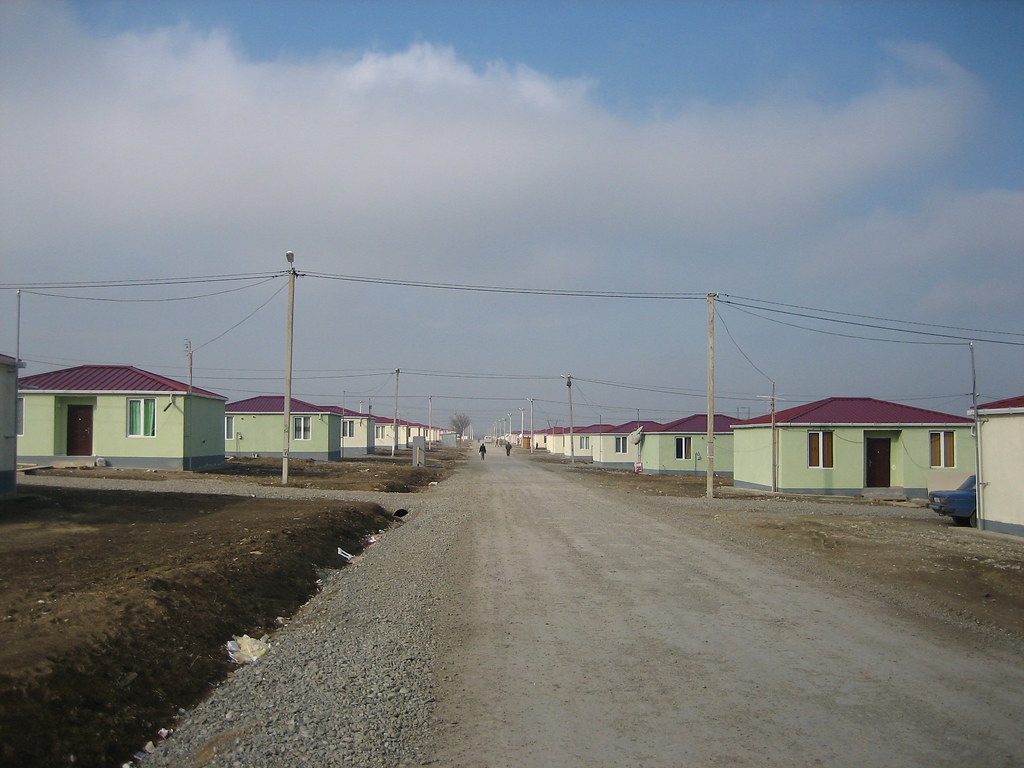 photo am 22. Februar 2009 von offseason
photo am 22. Februar 2009 von offseasonDiashow >>>
IDP = Internally Displaced Person
4,000 buildings have been built here for people who have had to leave their homes in South Ossetia.
Tuesday, February 24, 2009
EU: Zu östlicher Partnerschaft der EU gehören auch Russland und die Türkei (focus.de)
Zum Kooperationsangebot der EU an östliche EU-Nachbarstaaten gehören nach Außenminister Frank-Walter Steinmeier auch die Zusammenarbeit mit der Türkei und Russland. Auf einem Treffen der EU-Außenminister verteidigt Steinmeier auch ein umstrittenes Partnerschaftsangebot an Weißrussland.
Die EU will ihre östlichen Nachbarstaaten finanziell stärker unterstützen. Beim EU-Außenministertreffen in Brüssel zeichnete sich nach Angaben von Bundesaußenminister Frank-Walter Steinmeier am Montag Unterstützung für den Vorschlag der EU-Kommission ab, die bis 2013 eingeplanten Mittel von 250 Millionen Euro auf 600 Millionen Euro aufzustocken. Steinmeier sprach sich zudem dafür aus, im Rahmen der Östlichen Partnerschaft auch die Zusammenarbeit mit der Türkei und Russland zu vertiefen. Die Östliche Partnerschaft ist ein Kooperationsangebot der EU an die ehemaligen Sowjetrepubliken Ukraine, Georgien, Armenien, Aserbaidschan, Weißrussland und Moldawien. Bei bestimmten Projekten sollten aber auch weitere Länder mitwirken dürfen, sagte Steinmeier. „Dazu gehören nach unseren Vorstellungen auch Russland und die Türkei.“
Der ganze Text >>>
ART: Stipendium für KuratorInnen aus Georgien (gfzk-online.de)
 Die Galerie für Zeitgenössische Kunst Leipzig und die Kulturstiftung Freistaates Sachsen vergeben jährlich ein Stipendium an junge KuratorInnen aus postsozialistischen Ländern. Nachfolgend findest man Informationen und im Anhang die Ausschreibung.
Die Galerie für Zeitgenössische Kunst Leipzig und die Kulturstiftung Freistaates Sachsen vergeben jährlich ein Stipendium an junge KuratorInnen aus postsozialistischen Ländern. Nachfolgend findest man Informationen und im Anhang die Ausschreibung.Für 2009/2010 wird das Stipendium in Georgien ausgeschrieben. Ich bitte darum, diese Information zu verbreiten. Wer kann e-mails zu Kulturschaffenden, Institutionen usw. sowie Tips zu lokalen Internetseiten geben, wo die Ausschreibung angekündigt werden könnte?
Das Stipendium wurde 2002 von der GfZK und der Kulturstiftung des Freistaates Sachsen ins Leben gerufen. Es richtet sich an junge KuratorInnen aus postsozialistischen Ländern, die ein Jahr lang in der GfZK kuratorisch arbeiten. Jedes Jahr wird das Stipendium in einem anderen Land ausgeschrieben und ein junger Kurator/eine junge Kuratorin nach Leipzig eingeladen. Das Stipendium dient dem Austausch verschiedener Erfahrungen und kultureller Prägungen. Die in diesem Zusammenhang geknüpften Kontakte und daraus resultierenden, oft langjährigen Kooperationen flossen und fließen unmittelbar in das Programm der GfZK. Stipendiatinnen in der GfZK Leipzig waren Ilina Koralova (Sofia, Bulgarien) - 2002/2003, Lena Prents (Minsk, Weißrussland) - 2003/2004, Oana Tanase (Bukarest, Rumänien) - 2004/2005, Andreja Hribernik (Gortina, Slowenien) – 2006/2007, Edina Nagy (Budapest, Ungarn) - 2007/2008 und Joanna Sokolowska (Warschau, Polen) - 2008/2009.
Ausschreibung 2009/2010 PDF
STIPENDIUM FÜR KURATOR/INNEN AUS OSTEUROPA
Die Galerie für Zeitgenössische Kunst Leipzig (GfZK) und die Kulturstiftung des Freistaates Sachsen schreiben ein Stipendium für ein einjähriges Volontariat in der GfZK für junge KuratorInnen aus Georgien mit Deutschkenntnissen aus. Der Stipendiat/ die Stipendiatin erhält 1000 Euro monatlich, die Galerie übernimmt die Unterbringung während der Zeit des Volontariats. Beginn ist der 1. September 2009.
Das Stipendium ist eng an das Programm der GfZK gebunden, dessen thematische Schwerpunkte im Jahr 2009/2010 den gesellschaftlichen Auftrag von Kunst und ihrer Institutionen hinterfragen werden. Dabei wird besonderer Wert auf die Entwicklung verschiedener Vermittlungsstrategien gelegt. Das Jahr in der GfZK bietet die Möglichkeit, sich aktiv an der Ausführung des Ausstellungsprogramms zu beteiligen und dazu einen eigenen Beitrag zu leisten. Letzterer kann sich auf einer inhaltlichen Fragestellung anhand des Themenschwerpunktes beziehen.
Wir bitten alle BewerberInnen, einen ausführlichen Lebenslauf, Motivationsbrief und eine Beschreibung des eigenen Interessensfeldes (nicht länger als eine A4 DIN Seite), bis zum 15. April 2009 an die Adresse der GfZK zu schicken, Kennwort: „STIPENDIUM FÜR KURATOR/INNEN AUS OSTEUROPA". Es gilt das Datum des Poststempels.
Für alle Fragen steht Ihnen Joanna Sokolowska (sokolowska@gfzk.de) zur Verfügung.
Weitere Informationen finden Sie hier >>>
CLUB: Irakli Shonia - 27 / 28 february @ numbar one & pm
AUSSTELLUNG: Kazbegi - ein Dorf im großen Kaukasus Georgiens - Fotoausstellung von C. Häublein
Pressemitteilung von: GO EAST - Galerie
(openPR) - Christina Häublein, Kulturwissenschaftlerin und leidenschaftliche Reisende verbrachte im Sommer 2007 im Rahmen eines Global Education Network (Glen) Projektes drei Monate in Kazbegi, einem kleinen Dorf im Kaukasus, nördlich von Tiflis und nur fünf km entfernt von der russischen Grenze. Gemeinsam mit zwei weiteren jungen Frauen aus Estland und Lettland entwickelte sie ein Tourismus-Konzept, dessen Ziel es war, die dort lebende Bevölkerung einzubinden und Einkommensmöglichkeiten zu schaffen. So entstand u.a. die Internetseite www.kazbegi.info mit Verzeichnissen von Gastfamilien und Sehenswürdigkeiten.
Unsere Fotoausstellung: Kazbegi – ein Dorf im großen Kaukasus Georgiens zeigt die Menschen dieser Gegend und die weite, noch unberührte Berglandschaft. Zur Ausstellungseröffnung am 19.03.2009 um 18.30 wird Christina Häublein in einem Bildvortrag mehr über ihr Projekt und ihr Leben mit den Menschen dort erzählen. Die Ausstellung läuft vom 19.03.2009 bis 30.04.2009. Öffnungszeiten: Mo, Mi, Fr jeweils von 10.00 bis 17.00 Uhr und auf Anfrage unter der Rufnummer: 040 89 69 09-0
GO-EAST Galerie, Bahrenfelder Chaussee 51, 22761 Hamburg
Tel.: 040 896 90 90
Go East Reisen ist ein Reiseveranstalter mit angeschl. Reisebüro (IATA Agentur) und Geschäftsreisedienst mit Sitz in Hamburg.
Geschäftsführer: J.Szech Gründung: 1989, Mitarbeiteranzahl: 10 fast 20 Jahre Erfahrung und Kompetenz, Spezialist für Osteuropa und Asien mit langjährigen Partnern, Veranstalter von Individual-u. Gruppenreisen, Erlebnis- u. Städtereisen, Bausteinprogrammen, Visaservice
In der Go East Galerie bringen wir mit unterschiedlichen Ausstellungen Interessenten vor allem die russische, osteuropäische und chinesische Alltagskultur näher. Wir wollen Lust und Neugierde auf diese Kulturen wecken und die Möglichkeit für Begegnungen und Austausch schaffen.
Monday, February 23, 2009
BLOG: From Baku to Russian-Occupied Georgia (michaeltotten.com)
“Russia can have at its borders only enemies or vassals.” – George F. Kennan, United States Ambassador to the Soviet UnionBaku, the capital of Azerbaijan, looks as though it might never have been a part of the Soviet Union. It is perhaps the least communist-looking capital in the nine post-communist countries I’ve visited.
“You must draw a white-hot iron over this Georgian land!…You will have to break the wings of this Georgia! Let the blood of the petit bourgeois flow until they give up all their resistance! Impale them! Tear them apart!” – Vladimir Lenin
So much oil money has been pumped into the city that its revival and transformation is nearly complete. The countryside, though, is much rougher and poorer, and my trip across that landscape to Georgia from Baku felt in many ways like a trip backward in time, as if a year were being subtracted from the date for each of the 18 hours I sat on the train. By the time I reached the outskirts of Gori in central Georgia and ran into Russian soldiers carrying Soviet era equipment marked with the Soviet Union's insignia, the trip back in time to the days of the empire felt all but complete.
First, though, the journey >>>
Sunday, February 22, 2009
BOOKS & PAINTING: A British-Georgian Relation between Michael Berman and Maka Batiashvili (o-books.com)


CONTENT: "Everything shifts in the Caucasus, blown by some of the strongest winds on earth. Even the ground moves, splintered by fault lines. In early Georgian myths, it is said that when the mountains were young, they had legs – could walk from the edges of the oceans to the deserts, flirting with the low hills, shrouding them with soft clouds of love". Michael Berman
Michael Berman
Extent: 196 pages Size: 51/2x81/2 inches 216/140mm
Paperback
World rights
First published 2009
Anthropology/Shamanism
CONTENT: Known as the “land of the mountains,” Dagestan lies immediately north of the Caucasus Mountains, and stretches for approximately 250 miles along the west shore of the Caspian Sea. With its mountainous terrain making travel and communication difficult, Daghestan is still largely tribal.
Despite over a century of Tsarist control followed by seventy years of repressive Soviet rule, there are still 32 distinct ethnic groups in Daghestan, each with its own language, making it unquestionably the most complex of the Caucasian republics. Shamanic practices are still prevalent in this country, where one of the ten lost tribes of Israel can be found, and in which the stories of the elders provide the people with evidence of who their ancient ancestors were and where their roots lie. In Daghestan, as in the neighbouring countries of Georgia, Chechnya, and Azerbaijan, these roots lie in shamanism. This book, one of only a handful available in English on the country, contains the texts of some of these stories as well as commentaries on them.
AUTHOR: Michael Berman BA, MPhil, PhD (Alternative Medicines) works as a teacher, teacher trainer, and writer. Publications include A Multiple Intelligences Road to an ELT Classroom and The Power of Metaphor for Crown House, and Tell us a Story for Brian Friendly Publications. Books published by Cambridge Scholars Publishing include The Nature of Shamanism and the Shamanic Story (2007), Soul Loss and the Shamanic Story (2008) and Divination and the Shamanic Story (2008). Michael has been involved in teaching and teacher training for over thirty years, has given presentations at Conferences in more than twenty countries, and hopes to have the opportunity to visit many more yet.
Although Michael originally trained as a Core Shamanic Counsellor with the Scandinavian Centre for Shamanic Studies under Jonathan Horwitz, these days his focus is more on the academic side of shamanism, with a particular interest in the folktales with shamanic themes told by and collected from the peoples of the Caucasus. For more information please visit www.Thestoryteller.org.uk
ENDORSEMENTS AND REVIEWS: By gathering and reproducing en bloc the various stories contained in this book, Michael Berman does a valuable service in that he reminds us of the rich and variegated religious-cultural heritage of the Daghestani peoples. For rendering otherwise dispersed source materials readily accessible in a single volume, this book is to be congratulated. ... I greatly enjoyed each of the stories contained in this book, just as I very much appreciated Michael Berman’s interpretation of them. I trust you will too. Dr Andrew Dawson, Lancaster University, UK
An engrossing and enlightening journey into a fascinating country and genre. The stories are skillfully narrated and critiqued in a manner that retains their original vigour while making them accessible to a reader unacquainted with the tradition. This is storytelling at its most insightful and potent. Wayne Rimmer PhD, teacher trainer & Director of Studies at International House in Moscow
Michael Berman draws upon his extensive experience as a storyteller to bring to life the fascinating shamanic traditions of the little-known Daghestani people. Bob Trubshaw, author, photographer and Commissioning Editor of Heart of Albion Press
Michael Berman understands better than most the power of the stories that make our world. In this, his latest study of shamanic narratives, he takes his skill in elucidating the unity in diversity to the mountains of Daghestan - and comes back to everyday reality with some real treasures to share. Julienne Ford PhD, formerly a lecturer at Middlesex University and the founder of the publishing company Superscript
In the shallowness of an unsettling time that equates myths with lies, and from a region, between the Black and Caspian Seas, where such a mixture of peoples hangs on to ancient traditions and the proud idiosyncracies of its own languages, Berman’s wide-reading and passion for the shamanic roots of stories (still being told) make for a disturbing vision of what the human race (in the grip of glib authoritarian pressures) no longer wants to face in itself. These stories have been hammered out of a harsh landscape, and break the bounds of all comfortable behaviour. They find their truth where reality stops; but they also expose, in the layers of their building, influences of folk-lore elsewhere. Berman is most interested in their shamanic echoes, but they are also a pared-down revelation of Daghestan itself, the rich residue of its history and culture, and a compliment to its hard-bitten, gnarled, but generous and perceptive grasp of the paradoxes of human nature. R.G. Gregory, author and founder of Word in Action, a travelling theatre company that has performed all over the world
This book will be in stock on Friday 30 October, 2009.
This book is not yet Published. Estimated date in stock on Friday 30 October, 2009.
In addition to the covers for Shananic Journeys Maka Batiashvili gave two paintings for another covers for books from two georgians writers: Nino Tarkhnishvili and Eka Qevanishvili - Tbilisi
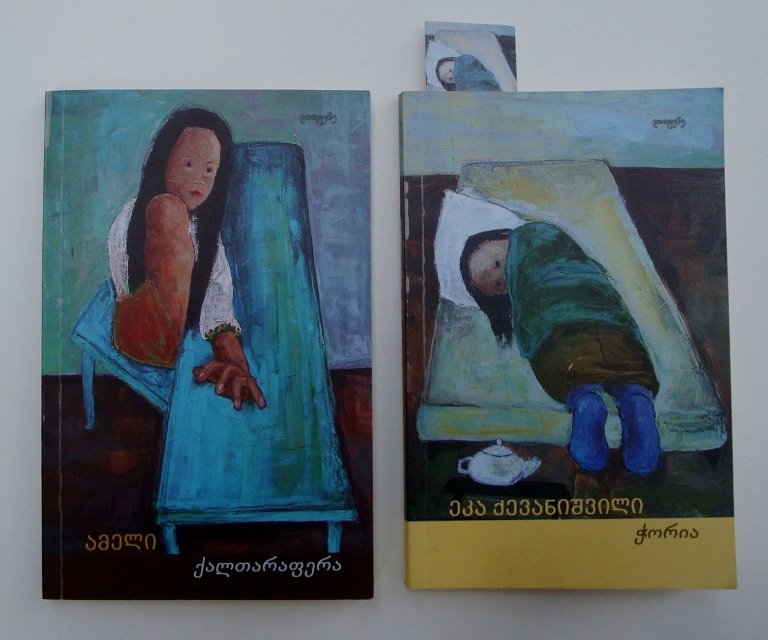
CONFLICT: “ Zones of Peace in the South Caucasus ” initiative (a1plus.am)
While Georgian Minister for Reintegration Temuri Yakobashvili’s announcement this week of the Georgian initiative to declare Abkhazia a weapon-free zone was met with disdain by Russia and Abkhazia, there is merit to a much broader consideration of Zones of Peace. Beyond simply banning weapons, Zones of Peace are geographic areas where violence is limited and a culture of peace and tolerance is encouraged. Zones of Peace, already successful elsewhere, present promising prospects for the future of the South Caucasus, particularly if structured so as to be attractive to all involved. For example, if the Georgian government were to work towards making all of Georgia – not only Abkhazia - a weapons-free zone, that idea might find favorable Russian and Abkhaz consideration.
Rather than becoming a battlefield for global power struggles, the Caucasus as a whole could transform into a Zone of Peace, where no military powers would compete and all cultural traditions, religious practices, and languages would be respected. We know transformations are possible; post-World War II European reconciliation giving rise to the E.U. demonstrates radical transformation. Zones of Peace in the South Caucasus are also possible-hopefully without another sixty-year delay.
Zones of Peace have worked to keep villagers in Colombia and the Philippines safe from the violence surrounding their homes, to protect eighty-six communities in a larger Local Zone of Peace in Ecuador, and to safeguard residents along the mountainous Peru-Ecuador border. In an even grander peace initiative, the entire country of Costa Rica relinquished its military forces. Zones of Peace could offer similar benefits in isolated villages, across buffer zones, or regionally throughout the South Caucasus.
There is a history in the Caucasus of markets serving as informal Zones of Peace in the towns of Egret and Sadakhlo, and at the Red Bridge market. While local people from across conflict lines have bought and sold produce, they have also kept communication open between their communities. More of these micro Zones of Peace could facilitate necessary local trade, while simultaneously keeping grassroots communication open between the societies separated by conflict. Legalizing and supporting markets in Zugdidi near the Inguri, near Sadakhlo, the Red Bridge area, and Ergneti would minimize the threat of heroin trade or other illicit activities by allowing appropriate regulation of market activities.
Larger buffer zones already established along the lines of conflict could also become Zones of Peace. Instead of resounding with daily sniper fire, these spaces could become truly demilitarized zones. Unarmed military observers or others invited by the local community could patrol such security zones to prevent illegal activities and protect their demilitarized character.
An even more ambitious regional Zone of Peace would remove military forces from the whole South Caucasus, allowing economic interests to flourish and a culture of peace to develop. With local police curbing crime, the people in the zone would stop allocating precious resources to fight debilitating wars, and development would surge with more open market access. In the absence of the threat of war, travel between the conflict zones would be restored, and a longer-term conversation on settling political differences without the use of force could develop. Only a stable Zone of Peace, and much time, will make real reconciliation possible.
The peace within the European Union was not built overnight. It emerged from the ashes of World War II when a few individuals envisioned the possibility of cooperation. They started with coal and steel, and grew into more multifaceted cooperation.
The South Caucasus, too, could be dramatically different in time. Zones of Peace could start small with markets along the conflict lines, then build towards whole buffer zones, and eventually include broader regional arrangements. Gradually building Zones of Peace will steer the Caucasus away from a future of ongoing geopolitical struggle and violent conflict, and instead toward one of interethnic and interreligious coexistence.
The Georgian initiative for a weapons-free Abkhazia is only one version of a Zone of Peace. In this tense post-war period, other structures including parallel demilitarization on all sides would be more widely attractive to all parties. Both small and large Zones of Peace can only be built cooperatively, when all parties willingly giving up the option of resorting to violence.
The radical transformation from a war-torn region to a beacon of peace will require courageous risks. Are we willing to take risks today so that, in two or three generations, coexistence in the Caucasus will be as obvious as the E.U.’s post-World War II integration is today?
About the Authors:
Susan Allen Nan is Assistant Professor of Conflict Analysis and Resolution at George Mason University. Irakli Kakabadze teaches Peace Studies at Cornell University. Arsen Kharatyan is a founding member of the youth movements Sksela and Hima. Jamila Mammadova is a South Caucasus Program Officer at the Institute for Multi-Track Diplomacy. Ekaterina Romanova is a Ph.D. Candidate in Conflict Analysis and Resolution at George Mason University.
source: a1plus.am/en
STATEMENT: Armenia, Georgia Don't Experience Unsolvable Problems
The talks between Armenian Foreign Minister Edward Nalbandian and his Georgian counterpart Grigol Vashadze covered thew hole scope of the Armenian-Georgian relations.
"We referred to the programs implemented and plans for the future. InMarch, days of Georgian Culture will kick off in Yerevan. An Armenian delegation is expected to pay a visit to Tbilisi in April," Minister Nalbandian said.
For his part, Mr. Vashadze stressed the importance to promote cooperation between the two states.
"Armenia and Georgia don't experience unsolvable problems. There is no problem of Armenians of Javakhk but there are economic regional problems which should be addressed. As to recent arrests, these people were detained not because of being Armenians but because they were engaged in anti-state activities. If Georgians had violated laws, they would have been arrested as well," he said.
"I would like to emphasize that Tbilisi is interested in integrationof Armenians in the Georgian society and this process should be expedited," Vashadze added.
BOOK: Gay Novel Shocks Azeris. By Nigar Musayeva. (iwpr.net)
 Book about love affair between Azeri and Armenian sells well, despite uproar over its publication.
Book about love affair between Azeri and Armenian sells well, despite uproar over its publication.By Nigar Musayeva in Baku (CRS No. 481, 20-Feb-09)
Artush and Zaur were two schoolchildren growing up in the great multi-ethnic city of Baku, but fate was not kind to them. Just when they were discovering their love for each other, they were torn apart by war.
Artush, an Armenian, ended up in Armenia, while the Azeri Zaur was left to mourn the memories of his lost love as he walked the streets of Azerbaijan’s capital.As a plot for a novel, it is not the most original in the world. But the twist has shocked Azerbaijan and made author Alekper Aliev infamous in his homeland. For both Zaur and Artush are men.
Setting a love affair between two men in the midst of the conflict over the region of Karabakh, which is ruled by Armenians but claimed by Azerbaijan, has proved controversial.
“I think that only a sick or completely cynical person could write such gibberish, someone who spits on his own country and on the millions of people harmed by the Karabakh war. It is just filth, that’s what it is,” said Sultan Gafarov, a student in Baku.
Such attitudes are widespread in the country. Homosexuality has been legal in Azerbaijan since September 2000, and it is illegal to discriminate against homosexuals, but openly gay Azeris meet abuse in many areas of life.
“There is xenophobia against homosexuals in society, which is stirred up by publications about AIDS. It is not universal. For example, homosexuals who achieve a high place in society are not criticised. In society, a rich homosexual appears more of a man than a poor heterosexual,” said Eldar Zeynalov, director of the Human Rights Centre of Azerbaijan.
In such a complex atmosphere, Aliev knew that publishing his book would not prove easy.
“In Azerbaijan not one publishing house would agree to issue a homoerotic book, which in their opinion dirtied the good name of the Azeri people,” he told IWPR.“
The main theme of the book is the conflict between Armenia and Azerbaijan, the theme of homosexuality is not essential, just a way of attracting attention. Everyone knows the negative opinion of homosexuality in the South Caucasus. Against this background, I tried to show the mosaic of conflicts in the three neighbouring republics.”He finally had to publish it through a private publishing house last month, but it has proved successful. One shopkeeper said the controversial novel had been “selling like hot cakes”.
“I am very glad that a novel finally emerged to shock conservative opinion in Azerbaijan. This is long overdue, to break stereotypes, to have a joke with public opinion,” said Khanlar Agayev, a businessman in Baku.
“I hope now the author manages to survive the many attacks that will come from readers and critics.”Such attacks have come from all sides, including from the religious hierarchy in the mainly Muslim country. Haji Fuad Nurulla, deacon of the Baku Islamic University, is among the strongest opponents of homosexuality, which he thinks has come in from abroad and is weakening national culture.
“In the Koran this is strongly condemned. It is a sin, abnormal. It is completely unacceptable for a man to wear women’s clothes, to behave like a woman,” he said.
“Such people must be isolated from healthy members of society, so they do not infect them.” Only one charity is helping Azerbaijan’s homosexuals with the difficulties of life in such an environment, the Union of Gender Development and Flourishment, which started work in 2006. Its funding primarily comes from The Netherlands. According to its chairman, Kamran Rzayev, homosexuals in the country have most trouble within their own families.
“There have been cases when parents, finding out about the non-traditional orientation of their children, have beaten them and thrown them out of the house,” he said.
“In such cases, we provide psychological support to these boys and girls and try to speak to their parents. Some parents, particularly those who are younger, come to our office themselves, and we explain that their children are not drug addicts, are not criminals, they are normal people who work, earn money, study, have their own interests.”
Natavan, a lesbian, is among the young people who gathered in the organisation’s kitchens to smoke and talk about their lives. She said her parents knew about it, but they did not talk about it in the family.
“Any conversation turns into an argument. They think it is a perversion, and probably think I am an ill-fated child,” she said.
“I want to have a normal family, I would like to live together with a loved one. But men just don’t interest me, and if I lived with a woman then everyone would spurn me.”
Rzayev said that a handful of single-sex couples do live in Baku, and that some of them had even been together for a decade or more. Some had even gone abroad to have their union recognised in one of the countries were gay marriage is legal.
As it turned out, that is exactly what happened to Artush and Zaur. After long years separated by the tense relations between Armenia and Azerbaijan, which have still not signed a peace deal, they find each other in Tbiliisi – a city where Azeris and Armenians can go and be friends again – and were married by a friend of Georgian president Mikheil Saakashvili’s Dutch wife.
Nigar Musayeva is a journalist from the Trend news agency and a participant in the IWPR Neighbours programme.
more:
Azerbaijan: Artush and Zaur, New Book by Alekper Aliyev, a Gay Love Story Between Armenian and Azerbaijani Published in Baku (in: http://gayswithoutborders.wordpress.com)
Alekper Aliyev, editor-in-chief of kultura.az, has published, as he put it, his “most scandalous” novel “Artush and Zaur” in Baku. It’s a gay love story between an Azeri and Armenian, a sort of partial deconstruction of Ali and Nino (a heterosexual love story of Azeri Ali and Georgian Nino) having instead Azeri and Armenian male lovers against the backdrop of the emerging Karabakh conflict.
ECONOMY: Tourism Suffer Because Of Financial-Economic Crisis
Tourism suffers greatly having the impact of the world financial-economic crisis on it. The number of tourists visiting Egypt reduced by 30%.
The representatives of tourism field told today that the crisis has had its impact on Armenian tourism also reducing the number of tourists. Robert Minasyan, the rector of Armenian Institute of Tourism says that as it is accepted in the international practice, the number of tourists is calculated based on their general number and the organized tours.
"According to the official information the number of organized tourism is 10% and this figure is not increasing. But it is extremely important to raise this figure."The expert recommends to find donor markets and not get limited with the participation to international exhibitions.
Mekhak Apresyan, the head of tourism and development of local economy said that more than 558 thousand tourists visited Armenia in 2008; this figure is by 9.4% higher compared with the previous year.
STATEMENT: Armenian turcologist: The Caucasus Platform has no future.
"The matter is that three countries of the South Caucasus will have to sign a common document and carry out joint actions aimed at maintaining security in the South Caucasus with two countries which are no part of this region. But how can, for instance, Georgia having problems with Russia, or Azerbaijan having problems with Armenia sign such a document?"- Safrastyan said. According to him, this initiative is a diplomatic phenomenon often applied when a proposal, in which not the goal but the process itself is important, is put to discussion. "The process is profitable for Russia and Turkey", he said. The process will give Russia to demonstrate to the USA that the latter has nothing to do in the Caucasus, and as regards Turkey, the process will give it an opportunity to create a kind of counterweight to the military-political domination of Russia in the Caucasus which was fixed after the South-Ossetian conflict, and to show that it is also an important regional player",- Safrastyan concluded.
STATEMENT:Crisis Has Similarities With Soviet System Collapses. By George Soros
Soros said at a Columbia University dinner the turbulence is actually more severe than during the Great Depression. He said the bankruptcy of Lehman Brothers in September marked a turning point in the functioning of the market system. "We witnessed the collapse of thefinancial system,"' Soros said.
Source: Panorama.am
Saturday, February 21, 2009
PHOTOS: Baku Sunken Ships In Crude Oil Lake
STATEMENT: Weathering the Storm: A Commentary on Armenia and the Economics of Defense (armenianow.com)
In addition, there is a related worry over the long-term impact from such a militarization of the region, especially for Armenia, as Azerbaijan has been using its oil wealth to fuel ever-larger defense budgets. Most worrying for Armenia, the constant drone of Azerbaijan’s militant rhetoric to “solve” the Nagorno Karabagh conflict by force has been bolstered by several years of billion-dollar-plus defense budgets. That combination of militant rhetoric and military spending now poses one of the most serious threats to regional security and stability.
[...]
The Risk of Hostilities & the “Hostilities of Risk”
The second factor of defense economics is the relationship between the risk of hostilities and the “hostilities of risk.” Notably, there is an inverse relationship between an increasing level of the risk of hostilities and an increasingly hostile level of risk, affirmed by the fact that international capital may pull out of a region once it becomes too dangerous to operate or too unstable to protect investments.
Ironically, this rather basic business maxim poses more of a threat to Azerbaijan than to Armenia. It also means that by aspiring to replace Armenia as the region’s dominant military power and threatening to retake Karabakh by force, Azerbaijan may soon face a worried group of investors who may decide that the risk outweighs the profit in Azerbaijan. And Azerbaijan is especially vulnerable to any downturn in investor confidence because of its over-reliance on foreign capital amid falling oil prices and due to a lack of industry beyond its energy sector.
Richard Giragosian is the director of the Yerevan-based Armenian Center for National and International Studies (ACNIS), and has worked as a consultant for various international organizations including the OSCE, World Bank, and regularly contributes to Jane's, RFE/RL, and Newsweek International, among other publications. Giragosian is a former professional staff member of the US Congress. "Weathering the Storm" is a weekly column exclusively for ArmeniaNow.
OSCE: Goran Lennmarker: "Frozen conflict" is a wrong expression" (anspress.com)
The eighth Winter Meeting of the OSCE Parliamentary Assembly opened in Vienna on Thursday, 19 February with President Joao Soares welcoming almost 270 parliamentarians and underlining the importance of the organization being willing to engage and meet new challenges.
Goran Lennmarker, OSCE PA President’s Special Representative for the South Caucasus and Daqliq Qarabaq delivered speech on regional conflicts in South Caucasus.
G. Lennmarker underlined: “Every year at average 25-30 men are killed in frontlines, this means conflicts are not frozen in these cases. The phrase “frozen conflicts” creates an imagination that to keep the same situation is possible. OSCE should also make attempts on reduction of arms in the region and Security Cooperation Forum should contribute to this issue as well”.
Besides that, G. Lennmarker initiated a suggestion toestablish a platform with participation of deputies of South Caucasian countries for regulation of conflicts.
source anspress.com >>>
NEWS: Azerbaijani poet: Lands occupied by force can`t be returned by freewill (anspress.com)
complete interview (anspress.com) here >>>I can assure you that I don’t undertand that. I read some articles on the occasion of my anniversary, everyone has been saying nice word about me. I really thank them all. But I don`t feel that greatness in me. I`m on the wole an ordinary poet. I mean I can`t be compared to those geniuses like Fizuli, nizami. Nasimi, Sabir…
You never know that. But as far as I can understand I write with spirit, with emotions, with passion. Literature or art is the “child” of emotions, science is the product of the brain. I`m not an expert, but I know that whenever I take up the pen when pure emotions overtake me I feel that what I wrote was beautiful, was emotional.
I think I would have become forester or something like that. Maybe you won`t belive me but I don`t really like sea. I don`t see the buity in it. It gets me mad. I like mountans. I can`t go up the mountainous now. Maybe I could use a horse. But it is not likely.
There are too much to say…but I want to say one thing. I wish my pople not to diverege from God. God always calls us to the right path. It calls us to justice. I want them not to lie, not to hurt each another, not to touch someone`s heart. We say here:” To break the heart is more sinfull than to break the nest”
What would you like to say your people about our occupied territories?
It is very painful issue. I think it is impossible to return the occupied territories by freewill. It is is impossibile. That`s is the way I think. We have lost the fight, but we need to strengthen our army. Witout it we can not achieve anything. If we want to win, we need to have strong army. If we want the peace, againm we need a strong army. We need a strong army. Everything obeys the power. In our time, even time itself the power. If your are strong, then your are right. If your weak, your are wrong. That is the way.

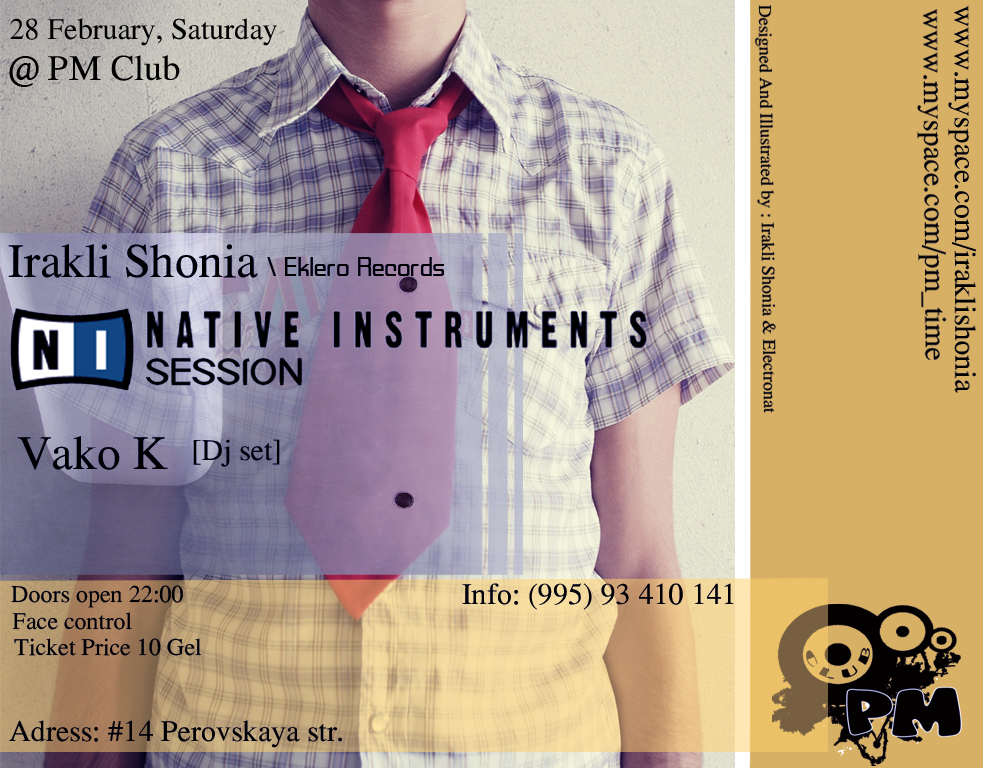
 Diashow >>>
Diashow >>>